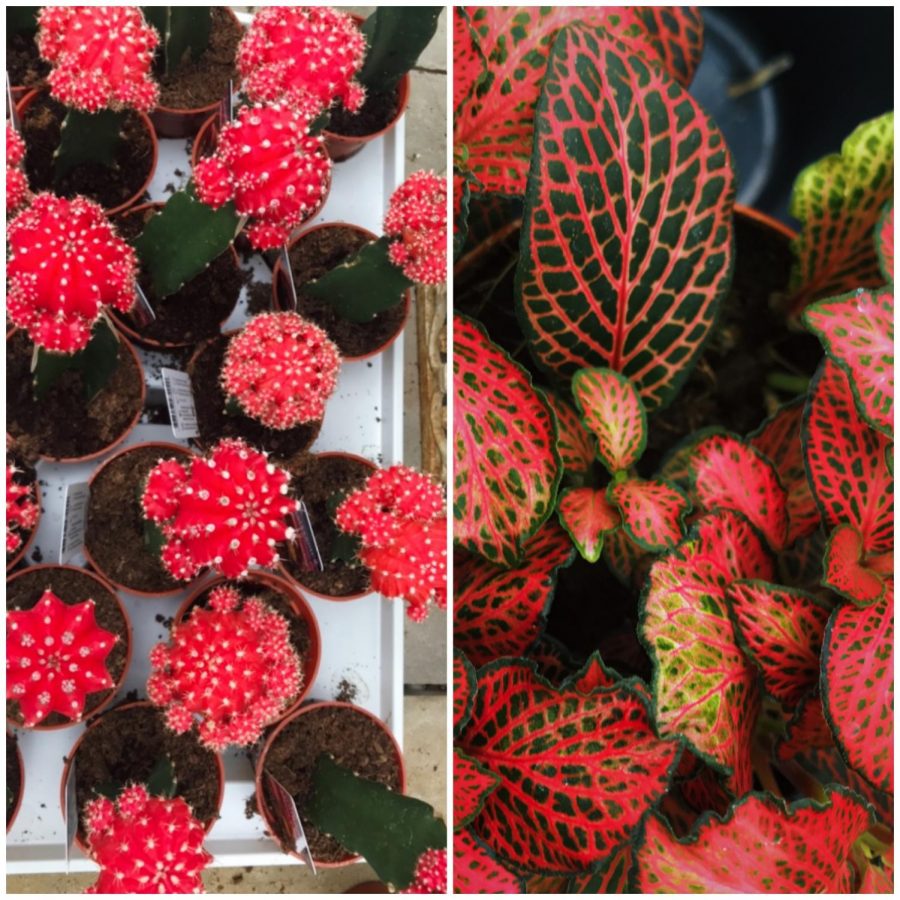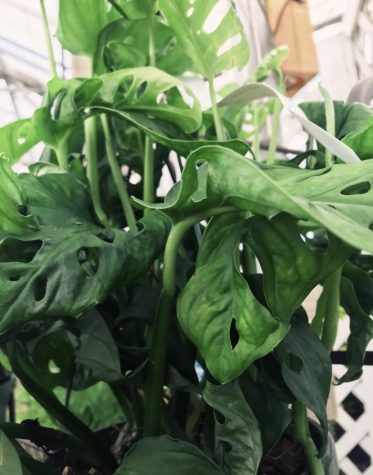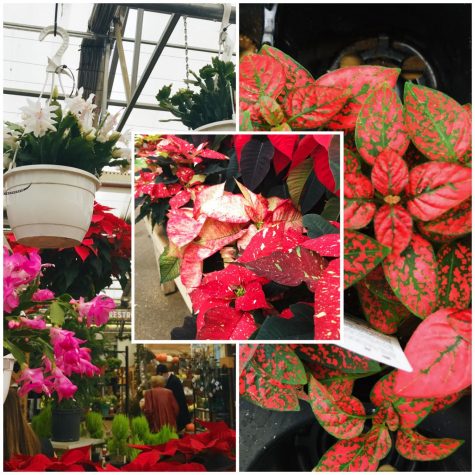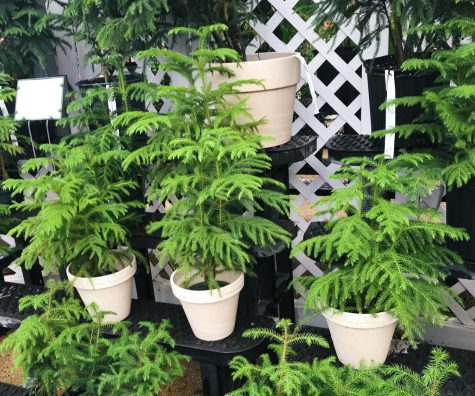The New Leaf: Holiday plants ranked (Part 2)
Left: A moon cactus. Right: A fittonia.
#5: Fittonia (Nerve Plant)
I may be a little biased as an owner of this plant myself, but this one has truly never gotten on my nerves (ha). The fittonia, or nerve plant, comes in many varieties other than red and green, but it really is perfect for Christmas Time, despite not being a well known holiday plant. Because of this, outside of the Christmas season, it’s not much of a stretch to say that they are just your average tropical plant… with some color. Not only are these plants easy to care for, but they are also extremely adaptable.
Native to Peru, fittonia need somewhat high humidity, which can be easily accomplished by placing it in a bathroom, terrarium, or by using a pebble tray. Personally, I keep mine in a bathroom and it’s doing great. If you can’t provide at least slightly-highly humid conditions, misting will be necessary. These plants are also non-toxic to pets according to the ASPCA, so they are perfect for any animal lover out there. According to Gardening Know How, nerve plants thrive in moist, well drained soil. Make sure the soil is not waterlogged however, as this can lead to root rot. The soil should be allowed to dry out a little bit in between waterings. They prefer bright indirect light (the word indirect being very important here), but can also adapt to lower light conditions. My fittonia is kept in a somewhat shady area, and it is still doing well. I’m not recommending putting your plant in a less bright spot than it would prefer, but at the same time it definitely won’t kill it as long as it’s still getting some light. Water that is too cold or too hot is not ideal for nerve plants, as they prefer room temperature water and like to avoid drastic changes in climate. Due to this, they should also be kept in an area without drafts, as they can be somewhat sensitive to this as well.
Fittonia care may seem a bit overwhelming to someone new to plants, but, as an owner of many, it seems to be one of my hardiest in comparison to many of the others I own. Not to mention that its distinct patterns are to die for. The fittonia I own is green with white veins, but I think the red and green species is even more of an eye catcher. These plants are also perfect for someone with cramped quarters looking for some greenery, as they grow only about three to six inches high and 12-18 inches wide. Luckily, they are usually sold at a small, manageable size and can be trimmed down. Due to their size, they likely will range anywhere from six to 20 dollars. It should be easy to find one at a low price, whether it’s at a garden center or grocery store. For anyone looking for a plant that suits almost any circumstance, the nerve plant will be a great fit(tonia) for the season.
#4: Moon Cactus
At first glance, something with the word “cactus” in it can’t be very holiday-like. Or can it? Similar to the fittonia, this plant comes in a variety of colors, but only one variety, in my opinion, is truly Christmassy–red. The plants I’ve listed in this post so far may still seem a little challenging to those entirely new to plant care, so I figured I’d include one about as easy as they come: the Moon Cactus.
Native to South America, these colorful little guys are actually two separate plants. The colorful part on top is unable to retain chlorophyll and must be attached to one that is capable in order to survive for a period of time. According to Gardening Know How, these plants are relatively short lived, and they may not last for more than a few years. Due to this, even with the proper care, they are perfect for someone looking for a low commitment plant. However, the life of a Moon Cactus can be extended by placing it on another plant that can generate chlorophyll, which can be accomplished by cutting the touching ends until they heal together.
As for their actual care, it is as easy as I promised. Moon Cacti should be kept inside when there are temperatures lower than 50 degrees Fahrenheit, and should receive bright indirect sunlight. Owners should refrain from watering in the winter months, but for the rest of the year, water deeply when the entirety of the soil is completely dry. The plants usually stay awfully small, so they are great for someone with little space. Moon Cacti also like crowded quarters, so keep them in a well drained pot and do not re-pot often. Unless the plant does not have an adequate pot for drainage, they should stay in the pot they were purchased in for as long as possible. To add to the simplicity of these plants, they are also non-toxic to dogs and cats! Beware of the spikes, however, as like with anyone else they could give your furry friend a prick.
These colorful, spiky plants may have some quirks, but are extremely easy to care for and will be fulfilling for anyone new to plant ownership. It may not last for decades, but it will be a great introductory plant for any new owner. With its bright red and green colors, and low price (it starts at usually nine dollars) it is also perfect for the holidays and someone on a student’s budget. I personally do not own one, as I am not a big cacti collector, but will definitely be gifting some of these to my friends this holiday season. To specify, the Moon Cacti I gift this season will be going to the ones that have whatever the opposite of a green thumb is. Whether it’s given as a present, or is just a treat for yourself, this low maintenance holiday plant will definitely check the box.






